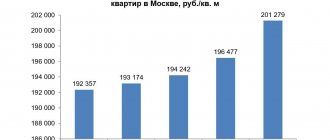The article was updated on March 25, 2019.
General household needs are the amount of costs for maintaining the common property of an apartment building, which citizens pay monthly to the management company. It is very important to understand how it is formed, what public services are included in it and what the reform of the public transport service will bring.
Planned changes when calculating general house needs in 2020:
- The increase in tariffs for one-way traffic services will be strictly regulated.
- There is no longer a separate line for home needs on invoices.
- The amount of expenses for general house needs will be reflected in the general account.
- As a result, utilities will increase by an average of 3%.
- When calculating the ODN for each apartment, its area will matter.
- Citizens must pay their utility bills on time, including ODN.
- The reform will lead to a more understandable scheme for calculating utility bills.
What does the maintenance of the common property of the house include?
ODN is the monthly cost of maintaining the common property of the house, that is, stairs, elevators, corridors, technical rooms, attics, basements, roof, etc.
This value may change. There are several factors that have a significant impact on its formation, such as time of year, region of the country, and also cannot exceed the indicators specified in regulations.
Last year, 2020, residents of each house could see the line “maintenance of common property” in their receipts. It represented the difference between the total utility expenses of the house and the resources used by the residents.
Standards for general house needs in the Moscow region 2020
In a 9-story building, the ODN standard for light in 2020 is 1.82 kW/h at a minimum, there is an elevator - pay 2.4 kW/h, a pump - 2.10 kW/h, power plants - 2.72 kW/h .
Recommend that local government bodies ensure, by holding general meetings of owners of premises in apartment buildings, informing the owners of premises who directly manage apartment buildings about energy saving measures in the event that the volume of communal resources consumed for general house needs, determined on the basis of readings from collective (common building) metering devices , exceeds the corresponding consumption standards.
If it is not there, Energonadzor calculates the energy consumption of a high-rise building according to the standard established back in 2012. Therefore, today it is necessary to be able to correctly calculate the ODN, so as not to end up on the list of losers who pay for extra kilowatts.
If an electricity consumption meter is installed in a high-rise building, the general building needs are determined by Energonadzor employees together with a representative of the building chosen at a meeting of residents.
The basis is the difference between the indicators of the general building meter and the total values of the meters installed in each apartment of the high-rise building, this also includes residential square meters that are not equipped with sensors.
The resulting value is distributed to all apartment owners without exception, taking into account the occupied space. That is, the larger the apartment, the more the owner pays for electricity supply in 2020. The formula that determines the size
Standards for general house needs
Please note that the bill for general utility needs will always be charged, even if the owner of the apartment is absent and does not live in his apartment. If the debtor does not pay the debt within the prescribed period, then appropriate measures will be taken against him.
Monitoring has not yet been carried out in all regions. About a dozen were temporarily left behind for “technical reasons.” But overall the picture is clear. Three maps were compiled: according to standards for the consumption of hot and cold water, as well as electricity for servicing common property in apartment buildings.
How is the ODN standard for electricity calculated and what is its size in 2020?
Electricity by ODN = (Values recorded on the electric meter - The total amount of electricity consumed in non-residential square meters that do not belong to common property - The total amount of resource in all residential apartments where meters are installed - The volume of electricity used in apartments where there are no meters) × Apartment area × The area of all apartments in a multi-storey building.
If a high-rise building does not have a meter installed for metering consumed electricity, the standard set by the regional administration is taken as the unit of payment. You can get acquainted with its size by going to the official website of the region.
The standard is a limit value, but if residents do not fit into this value, they can decide at the meeting to pay even more, of their own free will.
As you understand, such cases have never occurred in real life.
General house needs are included in the content of the law from January 1, 2020
To establish average standards, specialists will need to install a common meter for an apartment building and calculate the difference between general and individual consumption. The law comes into force. For example, rent out the elevator room as a beauty salon, and distribute the water consumption among the residents.
In most apartment buildings, the difference was completely distributed among the residents. Since the beginning of 2020, payments for one-time tax payments have received clear limits. The payment cannot exceed the corresponding standard for the consumption of utility services for general house needs.
From now on, the costs of paying for excess amounts of utility resources are borne by the HOA and the management company. Important! To include the payment for one service in the payment for the maintenance of residential premises, a decision of the general meeting of residents of the building is not required.
But at the same time, these innovations will in no way affect high-rise buildings with a direct management method and houses where the owners have not determined or implemented the management method.
In such cases, the previous scheme of payments for resources spent on ODN is retained. What is it? ODN stands for general house needs.
Standards for the consumption of utilities for general house needs in 2019
- Payment should be made based on the amount of resources spent on maintaining public property.
- The results are compared with current standards.
- If the volume received is higher than the established norm, the difference is paid exclusively at the expense of the company.
- Apartment owners pay for services only within the established norms.
As for hot water, it is used to carry out technological work related to the heating system, to discharge water during its repair, as well as to eliminate intra-house losses.
According to official data, water consumption rates range from 0.029 to 0.067 cubic meters per square meter. The following indicators are taken into account:
Standard consumption of utilities for general house needs
After this, a certain formula is applied. The result of dividing the area of the apartment and all rooms in the building is taken. It is multiplied by the consumption standard and the total area. The calculated indicator for each owner of the living space is added to the individual indicator or standard and is reflected in the receipt.
If services for general house needs do not meet quality requirements, there are interruptions that exceed the established maximum, and also during the period of repairs that caused the suspension, the amount payable is subject to recalculation, up to its complete cancellation.
Permissible deviations from the norm are specified in Decree of the Government of the Russian Federation No. 354. This rule applies to cases of service suspension if a common metering device is not installed.
The calculation is made based on the duration of the break and utility standards established for residential and technical premises.
Source: https://zakonandporyadok.ru/avtoyurist/normativy-dlya-obshhedomovyh-nuzhd-v-moskovskoj-oblasti-2019
Reforming the maintenance procedure and costs for the needs of an apartment building
Since the beginning of 2020, the costs of maintaining common property have undergone significant changes. Firstly, there is no longer such a line on invoices. This figure could be increased by 2-3% and included in the total bill.
There is also a scheme for controlling ODN with the help of new resources that will serve common property, time and cases of need for them.
This approach makes it possible to make utility costs more understandable for residents of the house. The components of the ODN themselves will remain the same.
The amount of costs for common property did not exceed the standards, and this can be monitored using metering devices for water and electricity.
Depending on the global economic situation, the increase in utility bills may be 7%. 2020 will be indicative for the reform of ODN.
Standards for one Moscow 2020 – Rights
The legal topic is very complex, but in this article we will try to answer the question “Standards for general house needs 2020 Moscow.” Of course, if you still have questions, you can consult with lawyers online for free directly on the website.
TASS/Valery MatytsinRegional authorities must establish a standard before April 1, 2020, above which no fees will be charged for general household needs, Sergei Fabrichny, deputy chairman of the State Duma Committee on Civil, Criminal, Arbitration and Procedural Legislation, told reporters. According to him, changes have been made to the article. No. 154 of the Housing Code and they come into force on April 1, 2020.
Read more - On January 1, 2020, the country's housing and communal services industry began to live by different rules - a new system for calculating general household needs (GDN) came into force.
In this article, we will look at how the innovation affected the activities of management companies, and what measures should be taken to minimize the financial risks of management companies, homeowners associations and owners of apartment buildings.
The housing and communal services industry in Russia is usually called a “black hole” into which billions of dollars of investment - money from owners and the state - fly away. New rules for calculating ODN have been adopted to calculate utility resources and distribute costs in accordance with actual consumption.
Payment for general house needs in 2020 may be limited by standard
We are waiting for 01.06 - from this date all one-day expenses will be paid according to the standard for Moscow.
In the meantime, an interesting article that says that very soon management companies may lose their licenses for incorrectly issued invoices.
Let's discuss? Management companies will soon be slapped on the wrist for trying to shift their losses onto the shoulders of the residents of the houses entrusted to them. Those who do not correct themselves will face the most terrible punishment - revocation of their license.
Moscow, st. Sadovaya-Triumfalnaya, village Documents Rule-making Documents. Anti-corruption examination Regulatory documents Resolutions Directives Orders Forms of agreements Administrative regulations Preliminary assessment of regulatory impact Public discussions of draft regulatory legal acts Resolution of the Government of the Moscow Region from VIDEO ON THE TOPIC: How is ODN calculated (2020-02-25) Tariffs for services have been approved in the Moscow region Housing and communal services for 2020 Views: On January 1, various laws and orders came into force, changes also affected the housing and communal services sector.
also establishes the following provision: For subsequent inclusions, the amount of the specified costs for payment of utility resources consumed in the maintenance of common property in an apartment building is determined based on the consumption standards of the corresponding types of utility resources for the purpose of maintaining common property in an apartment building, approved by government authorities of the constituent entities of the Russian Federation in accordance with the procedure established by the Government of the Russian Federation, Apartment buildings with centralized cold water supply, water heaters, drainage cubic meters.
Standards for the consumption of electricity and water for general household needs in the Moscow region
In connection with the introduction of fees for the management of solid municipal waste, the government of the Moscow region decided not to increase fees for major repairs of common property in apartment buildings per year.
The amount of the fee for major repairs remains at the same level as the year and will amount to 9.07 rubles.
At a meeting on December 19, the Council of Deputies of Elektrogorsk approved the amount of payment for the rental of municipal housing for tenants of residential premises under social tenancy agreements or contracts for the rental of residential premises of the municipal housing stock for a year.
: Kosgu 290 in 2020 for budget
First of all, it is worth noting that from now on the payment for one-way service is registered in the column that affects the maintenance of housing, and not utility resources, as it was before. So, what are the special factors that differentiate household expenses?
Standards for the consumption of utilities for general house needs in 2020
In all cases, without exception, the amount of resources spent on standard needs is initially calculated. After this, the value obtained after calculation is distributed in a special way among all accounts included in a certain area.
Important points
The difference obtained in the calculation is the amount of resources required to properly maintain the property of city houses. A comparison of the results obtained will allow us to determine the average indicator, and then approve it as a standard. In fact, this rule looks like this:
Under the current circumstances, the amount of overpayment of utility bills increases significantly, which is unprofitable for citizens. All participants in housing relations have the same rights to own, use and dispose of housing. At the same time, they are vested with responsibilities that must be fulfilled in the manner established by the legislator.
Standards for one in Moscow 2020
They apply to citizens who have debts to housing and communal services, starting with a 2-month delay in payment. They are sent a written notice with a warning, which is given in person against signature or sent by mail. The criteria for the impossibility of installing an individual and communal metering device in a residential building are confirmed by an inspection report.
on the topic: Standards for one in Moscow 2020
Andrey Chibis, Deputy Minister of Construction and Housing and Communal Services of the Russian Federation The formation of standards is established by the calculation method - when for each specific house its total consumption is calculated.
This will make payment transparent, since the management company will no longer be able to distribute excess heat, water and electricity standards among residents. Owners of residential premises are required to install a meter for the resources they consume.
If it is missing, then the amount of payment for the provision of utility services is calculated using a multiplying factor.
In particular, management companies had to inspect each house, detect cases of misuse of utility resources, and carry out work to improve energy efficiency.
From 2020, receipts include common household needs in the fee for the maintenance of common property.
The ODN payment is calculated based on the readings of common building meters installed in most apartment buildings, in comparison with the readings of individual meters.
Consumption standards in the city of Moscow for housing and communal services
Consumption standards in the city of Moscow are used to calculate payments for consumed utilities. Such standards are established for each resource.
Standards used when paying for housing and utilities
In 2020, the social standard for room area is used to calculate and provide preferences for payment for utilities and heating. These rules apply to situations where legal acts stipulate that benefits are determined taking into account social standards .
The table shows the applied values:
| Number of residents | Norm |
| Citizen lives alone | 33 square meters of total area |
| The family consists of two persons | 42 square |
| Three or more citizens in a family | 18 squares for each |
The specified standard for the size of the premises, taken into account when calculating payments for housing and communal services, was developed by Decree of the Moscow Government No. 306 of 2006 “On approval of the Rules...”.
Water consumption standards for 2020 in the capital
To pay for utility services, the standards set out in the above-mentioned Resolution are applied. In a situation where the premises are equipped with metering devices, their readings are used to calculate payment.
Amounts spent on general house needs are distributed among the owners of all apartments. The size of a specific housing is taken into account in proportion to the total area of the house.
In a situation where the apartment is not equipped with metering devices, the calculation is made on the basis of standards.
Similar rules apply to the calculation of the amount for common property, and it is subject to division between everyone equally.
These provisions are reflected in Government Decree No. 129 of 2015 “On Amendments...”.
Without a meter, payment is charged at an increased rate, which applies to a situation where a citizen is responsible for installing the device in question.
cold water standards are currently applied , presented as 6.935 m3 per person per month.
For hot water, the specified norm is 4.745 m3 per citizen. If the volume of consumption is determined without metering devices, the calculated value is subject to increase by the amount of consumption for general household needs. Important! Decree of the Moscow Government of 2014 No. 75-PP indicates that the total volume of water use in housing not equipped with metering devices cannot be more than the approved standards per person, multiplied by 2.
Norm of consumption of housing and communal services by Muscovites
From the beginning of 2020, the established consumption standards in the capital will remain the same. These indicators began to be applied in Moscow in July 2020 and will be valid until July 2020.
Since the summer, tariffs have increased by 7.5% compared to the first half of 2019.
Every year, the Government of the country recommends that regional authorities increase the cost of housing and communal services by at least the percentage typical for inflation.
In addition, subjects have the right to make adjustments to the current values. As a standard, higher standards are set in the capital of the country .
The reason is that every year the cost of work by resource supply companies increases.
According to the Decree of the Moscow Government of January 11, 1994 No. 41 “On the transition to a new payment system...” heating standards are established:
- consumption of thermal energy intended for heating the room - 0.016 Gcal/sq. m;
- water heating - 0.294 Gcal/person.
These indicators are used in a situation where there is no resource metering device installed in the room.
Gas standards
Also in the capital, separate gas standards are applied. They depend on the number of people living in the apartment.
Presented as follows:
- if a citizen lives alone and his living space is equipped with a gas stove, then the standard is 50 m³/person. per month;
- when a family lives in an apartment equipped with a gas stove – 45 m³/person. per month;
- if there is hot water supply in the living room - 8.3 m³/person. per month;
- if the apartment is equipped with a gas stove and water heater - 20.8 m³/person. per month;
- when there is no central water supply and there is a gas stove - 10.4 m³/person. per month.
The specified standards will also apply in a situation where the premises are not equipped with metering devices. When the house is not gasified, and the citizen uses a gas stove, there will be no need to pay for the resource in question.
Sewage standards in the capital
The standard water consumption in Moscow is reflected above, different for hot and cold. In this direction, one should take into account the provisions of Moscow Government Decree No. 41 dated January 11, 1994.
Depending on the level of equipment of a particular house with different communication systems, separate standard values are established.
For example, if a residential building is equipped with sewerage, running water, a bathtub, and hot central water supply, the standard for wastewater disposal is 11.68 m³ per person per month.
In this case, the standard per citizen for cold water is 6.935, for hot water - 4.745.
If the room has sewerage, running water and a bath with gas-type heaters:
- cold water supply - 9.86 m3 per citizen;
- water removal – 9.86.
If a water supply system with gas-type heaters for baths and sewers is installed in an apartment building, then the standards change. In this case, drainage and hot water supply is 9.49 m3 per person.
Please note: when a hotel-type residential building is considered, which is equipped with running water, hot water, and gas, the standards for wastewater disposal are 7.31 m3 per person, for cold water supply the figures are 4.386, for hot water supply - 2.924.
In a situation where an apartment building has a gas pipeline, sewerage, water supply, but no baths, the standard for water disposal is 4.57 m3 per person, for cold water supply - 4.57 m3. In addition, the permissible values are established relative to the personal plot policy, which are equal to 0.16 m3. This rule is valid from May to September.
Electricity consumption standards in capitals
For electricity, separate regulations also apply. These values also differ depending on what systems the MKD is equipped with.
Indicators used:
- if the apartment has a gas stove - 100 kW per person;
- availability of electric stove – 150 kW;
- when a water heater is installed - 120 kW;
- if both a water heater and an electric stove are used - 170 kW.
These values increase depending on how many citizens live in the apartment. However, the standards are reduced in proportion to the number of people living in the premises.
Using multiplying factors
The consumption standards for heat, water, gas and electrical energy are increased by a factor in a situation where a citizen should have equipped the premises with metering devices, but did not do so.
In this case, the provisions of Decree of the Government of the Russian Federation of April 16, 2013 No. 344 are applied, which specifies increasing values for calculating the amount of payment for housing and communal services.
They are presented this way:
- at the beginning of 2020 – 1.6;
- from 2020 – 1.7;
- at the beginning of 2020 – 1.8.
As a result, the citizen has to pay the increased cost of the resources provided.
Thus, standards for consumption of services in the housing and communal services sector within the capital are controlled by the executive system. The established values change every year.
Payment for general house needs (GDN) from January 1, 2020: what is included in the GDN - About the garden and home
(105,00
Source: https://pravovoeob.ru/normativy-na-odn-moskva-2020.html
Components of general household needs
What are the needs of the home and what can residents save on?
This is, first of all, electricity, which is required for the operation of intercoms, elevators, as well as lighting of stairs and basements. Also, the needs of an apartment building require specialized equipment.
- HVS. Maintenance of flower beds and lawns, maintaining cleanliness in entrances and office premises, cleaning sewers and other household needs.
- DHW. Activities related to the preparation of residential buildings for the heating season, that is, checking heating systems by releasing hot water, repairing radiators.
Does the management company have the right to accrue one
At the same time, since Part 7.1 of Art. 155 of the RF Housing Code directly states that the responsibility for providing public services of proper quality continues to lie with the management organization; it continues to be the provider of public services in relation to the owners. Only the method of calculation changes.
Quite often in practice situations arise when the calculation result can be zero or negative. This is possible in cases where the house is partially equipped with metering devices. That is, some apartments have them, others don’t. In this case, the utility service provider must recalculate the difference in amounts and divide it among the residents of the house, in proportion to the area or number of residents.
Scheme for calculating ODN costs in 2020
The volume of general household needs is affected by the presence or absence of metering devices both in the apartment itself and in the common staircase, office premises, etc. If these devices are available, then the volume will be equal to the difference between the metering device indicator in the common area and individual values.
Otherwise, regulatory documents are used. For the volume of one unit, take the standard as a basis and multiply it by the area of the house. The resulting value will be divided among all residents of the house depending on the area of the apartment.
Regulatory legal acts that relate to general household needs are established by the regional authorities; accordingly, different regions may have different standards. But in any case, residents must pay only existing standards.
Excess consumption of water, heat or energy will be paid by the management company or HOA. It is the responsibility of these structures for excess consumption that should force them to inspect each house under their jurisdiction, identify leaks or thefts, cases of unauthorized use of resources, and carry out work to conserve them and increase energy efficiency.
One electricity standards Moscow region 2020
- lighting of staircases, vestibules, entrances;
- electricity necessary for uninterrupted operation of intercoms;
- electricity consumed by elevator cabins;
- electricity for video cameras, if they are installed in the house;
- technological losses recorded in intra-house networks.
Voronezh is no different from other Russian regions in terms of pricing for basic housing and communal services, but different tariffs apply here. For example, for 1 person the standard for cold water is 69.6 cubic meters. Starting from January 1, 2020, housing and communal services standards increased 3 times, and since July they have increased 5 times.
ODN standards for electricity
- from 0.57 to 2.99 kW/h depending on the number of floors (from 1-2 floors to 16 or more) for lighting fixtures;
- from 0.25 to 0.57 kW/h for pumps and hardware control of cold water supply pumps, depending on the number of floors;
- from 1.19 to 1.58 kW/h in houses equipped with elevators, depending on their load capacity and the number of floors of the building;
- from 0.04 to 0.28 kW/h depending on the number of storeys and so on.
How to calculate ODN for electricity according to the established standard
5. The Organizational and Analytical Department of the Ministry of Housing and Communal Services of the Moscow Region should publish this order in the newspaper “Weekly News. Moscow Region" and posted on the official website of the Ministry of Housing and Communal Services of the Moscow Region on the Internet information and communication network.
On approval of standards for the consumption of utility resources for the purpose of maintaining common property in an apartment building (standards for the consumption of utility services for common house needs) in the territory of the Moscow Region (repealed on the basis of the order of the Ministry of Housing and Communal Services of the Moscow Region dated N 63-RV)
The Department of Energy and Tariffs approved new standards for single electricity supply.
The department's resolution is dated May 31 (remember that, in accordance with federal law, these standards had to be established before June 1), comes into force 10 days after publication, but its effect extends to the period from June 1, 2019. So residents of apartment buildings should see changes in electricity bills already in their receipts for June.
New standards have been established for electricity supply units
The actual volume of resources spent on the maintenance of common property is presented for payment. The resulting value is compared with current standards. If the actual volume exceeds the standard, then the difference is paid at the expense of the management company. Residents of apartment buildings Pay for services within the approved standards
Features of general house needs (GDN) in 2020
According to the rules that came into force on September 1, 2012, the consumer has an obligation to pay for utilities provided for general household needs. The initial goal of this decision was to reduce unreasonable utility expenses of citizens, as well as to structure payments. In practice, the situation turned out to be somewhat different.
From August 1, 2013, new rules for paying for general household needs are being introduced in the Moscow region
The meter is considered faulty after submitting an application to the energy sales company about its failure or from the date of drawing up a report on the malfunction by the inspector.
If it is impossible to determine the exact date, the countdown begins from the month when the event occurred. From this time on, the consumer is transferred to paying according to the average monthly expense.
This can last no more than 3 months, after which you will have to pay through regulations.
Electricity consumption standards per person without a meter
In most houses, electric meters that take into account the energy consumption of an individual apartment are installed in specially equipped panels on staircase landings. Any device does not last forever, so the meter may fail over time and will need to be replaced.
Calculation of ODN for electricity in an apartment building
On the official website of Mosenergosbyt, in the tariffs and payment section, three menu items are presented: “Information for the population about payments for electricity taking into account common household needs (ODN)”, “Methods of payment for electricity” and “Tariffs”, in turn in the “Tariffs” section there are description of electricity tariffs in force in Moscow and the Moscow region; by clicking on the “tariffs” section you can familiarize yourself with them in more detail to calculate your electricity costs.
Please note => Benefits and benefits for young families in Moscow
Electricity tariffs in 2020 in Moscow and the Moscow region
According to the head of the RST, “the proposals of organizations and municipalities to establish standards for electricity consumption for the common property of apartment buildings were 1.5-2 times higher than the indicators ultimately calculated by the regional tariff service of the Nizhny Novgorod region.”
The standard for electricity consumption at ODN in the Nizhny Novgorod region is one and a half times lower than in the Moscow and Krasnodar regions
The determination of the indicator depends on many factors, for example: Number of storeys of the house - Presence/absence of an individual heating station, lift pumping equipment, lighting of the entrance and adjacent areas, equipment of the house, a common house metering device. If we compare the standards approved for 2020 in different regions, the values are very different. Wh per month, for 5-storey buildings 2,210 kW/h, 12-storey buildings 4,411 kW/h, 13-storey buildings depending on the presence of an individual heating point - from 6,128 to 7,014 kW/h.
About standards for one electricity
In addition, until November 2020, new standards will be determined and approved for all subjects of our country (not all subjects have managed to do this).
The figures of these standards will be taken as the basis when calculating the amount of payments for home maintenance. And we can’t help but say that tariff changes always go up.
Therefore, citizens - in order to avoid unnecessary expenses, which are sometimes quite large - should be interested in installing their own meters in their apartments.
One standard for electricity
- First, you need to calculate the difference in electricity consumption between the indicators of the common house meter and the total indicator of individual meters.
- Having calculated the difference, and this will be the size of the total house electricity consumption for a given period, you need to divide the resulting kilowatts among all, without exception, residents of the high-rise building.
- When calculating the fee for one-room rental service, the size of the living space of each property owner in a given house is taken into account.
The housing and communal services reform carried out over the past 10 years in the Russian Federation includes the widespread installation of communal electrical energy metering devices in high-rise buildings.
Today they are already available in the vast majority of homes.
Payment for electricity on ODN
05 Dec 2020 yurisaktobe 89
Source: https://aktobeyurist.ru/spory-so-strahovymi-kompaniyami/normativy-odn-elektroenergiya-moskovskaya-oblast-2019







